![]()
The Canon EOS R1 has finally arrived. After much anticipation and years of waiting, the Canon EOS R System finally has its true flagship EOS 1-series camera. Does Canon’s new mirrorless camera take a spot on the podium, or does it come up short?
The Canon EOS R1 faces stiff competition from Nikon and Sony in the full-frame camera space. The Nikon Z9 delivers resolution and speed, much like the Sony a1. Sony also has the new a9 III, which, like the R1, opts for a 24-megapixel sensor. However, in the a9 III’s case, its novel global shutter image sensor makes it a compelling option for photographers who demand the absolute best speed.
As this specifications comparison will show, the Canon EOS R1 delivers some exceptional features, but it also lags behind the competition in some key areas.
Image Sensor: Resolution and Image Quality
Like the Canon EOS R3 before it, the R1 doesn’t offer many megapixels. This is a disappointing shortcoming, as Canon still doesn’t have an answer to Sony’s a1.
The Canon-designed back-illuminated stacked CMOS sensor sports 24.2 megapixels, slightly behind the a9 III’s 24.6 megapixels, way behind the Z9’s 45.7-megapixel resolution, and even further behind the Sony a1’s class-leading 50-megapixel sensor.
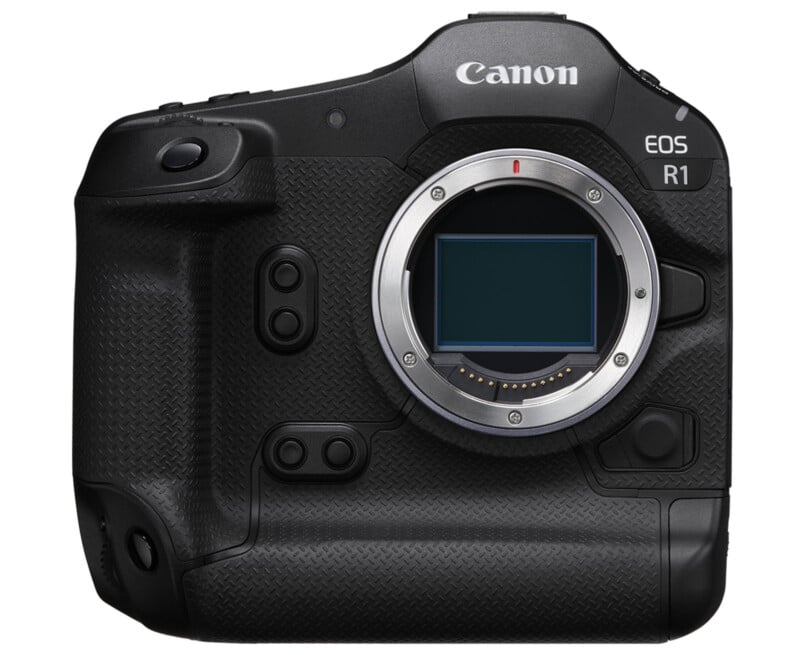
It is worth noting here that the “class” in question is a flagship camera that delivers speed and resolution up to the standard of a professional sports photographer or photojournalist. That is why the 63-megapixel a7R V isn’t in discussion — it’s not built for that application.
While the a9 III is also a 24-megapixel camera, it gets a pass by virtue of its new (and still unique) global sensor. It offers distinct advantages over other cameras, including no rolling shutter and 120 frames per second RAW image capture.
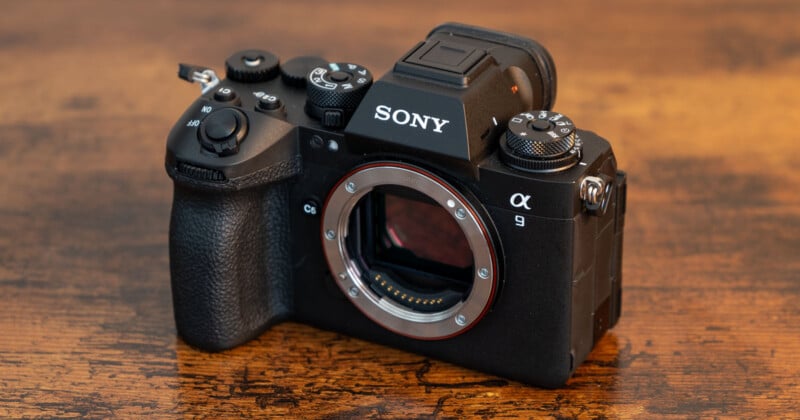
The R1 has AI-powered in-camera upscaling, but only for JPEG files. It’s one way to overcome its resolution shortfall, doubling horizontal and vertical resolution to create a 96-megapixel output file. This may prove helpful to a niche audience, but it does little to move the needle in this head-to-head comparison.
Of course, there’s more to image quality than resolution. In terms of dynamic range at lower ISOs and noise levels at higher ISOs, the R1 has thus far proven compelling in limited testing. Canon is no stranger to crafting cameras with solid image quality. The EOS R3 offers among the best dynamic range of any full-frame camera, for example. That said, the R3’s dynamic range dips considerably when using the electronic shutter, which is required for its fastest shooting speeds. Will the R1 fall victim to this pitfall too? Maybe. (Probably).
On the other hand, the a9 III’s global shutter sensor, which has many advantages, comes at a cost to image quality. It’s not necessarily a massive price to pay, and it doesn’t undercut the overall appeal of the camera for many applications, but it would be surprising if the R1 doesn’t outperform the a9 III in terms of image quality.
Verdict: For photographers who prioritize resolution, the Sony a1 and the Nikon Z9 are the obvious one-two finishers. For those prioritizing overall image quality, independent of megapixel count, the Canon EOS R1 will fight for the top spot.
Performance
The Canon EOS R1 has much to offer in terms of continuous shooting speeds and buffer performance. When using the electronic shutter, the camera can shoot full-resolution RAW and JPEG images at a swift 40 frames per second. This is faster than the Sony a1 and Nikon Z9, both of which top out at 30 frames per second at full resolution, although it’s worth noting that the Z9 tops out at 20 FPS when shooting RAW images.
While the Z9 doesn’t have a mechanical shutter at all, the a1 and R1 do, and they prevent the cameras from reaching their top speeds. When using their mechanical shutters, the a1 and R1 shoot at 10 and 12 frames per second, respectively.
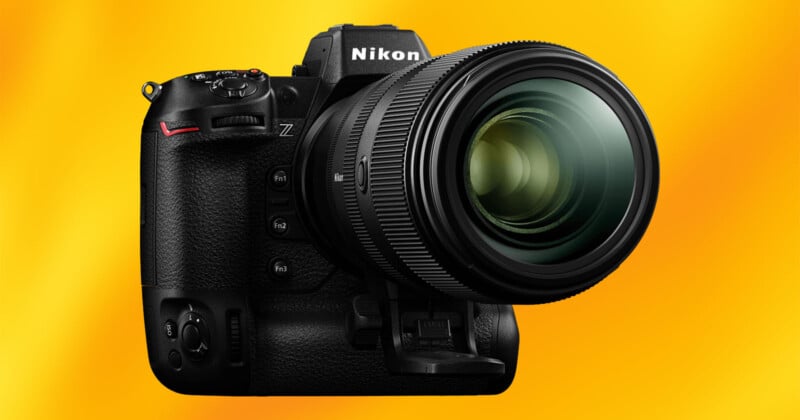
While the Canon R1 bests the a1 and Z9 in sheer speed, the Sony a9 III is an altogether different beast thanks to its global shutter sensor. Using compatible lenses, the a9 III can shoot up to 120 frames per second with full autofocus.
But buffer depth is also an essential factor. This is where the a9 III’s top speed comes with compromises, as the camera can only shoot at 120 frames per second for less than a couple of seconds. The R1, on the other hand, has a greater than 1,000-frame buffer depth. Further testing will be required to determine precisely what the RAW+JPEG buffer is, but it’s a very safe bet that the R1 will capture more images and shoot for longer at its top speed than the faster Sony a9 III.
While there are times when pure speed matters most, that’s not always the case. Sometimes, being able to shoot at still-very-fast speeds for longer will help photographers nail the shot. By the way, even if the a9 III is slowed to half its maximum speed (60 frames per second), photographers get only a bit more than three seconds of pedal-to-the-metal shooting.
Part of camera performance concerns the media each uses. The R1 writes to a pair of CFexpress Type B card slots, like the Z9. The Sony a1 and a9 III have CFexpress Type A and UHS-II SD card slots. CFexpress Type B cards are larger, but also offer double the theoretical maximum performance. None of these cameras support CFexpress 4.0, which is, admittedly, a bit disappointing, especially in the case of the a9 III. It does not appear to create a bottleneck in the case of the R1.
Verdict: The R1 is not the speediest camera of the bunch. However, it has considerable buffer depth, which enables it to shoot at its still-quick 40 frames-per-second maximum speed for a much longer period than the a9 III can shoot at 120 — or even 60 — frames per second. Performance is undoubtedly a strong suit for the Canon EOS R1, even if it isn’t the top dog.
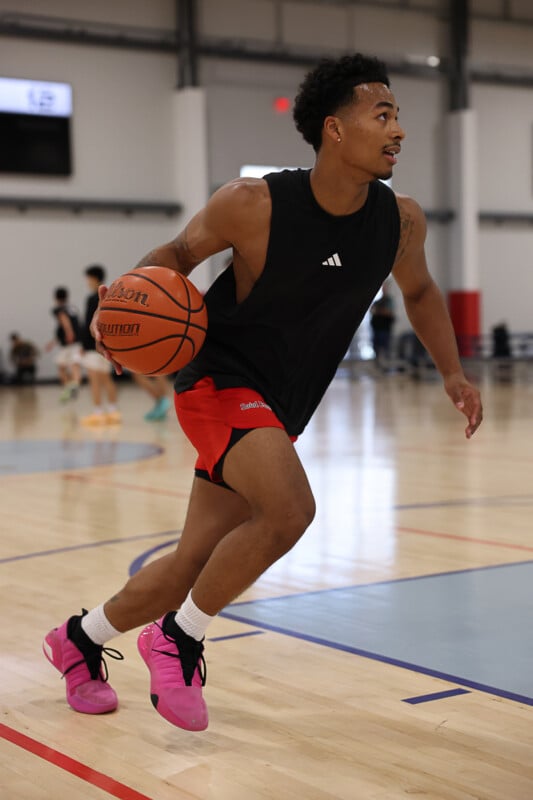
Autofocus
Evaluating autofocus performance depends upon objective and subjective measures, which are tricky to discuss given PetaPixel‘s limited hands-on time with a pre-production Canon EOS R1 camera. The early experience has been generally positive, but that’s where in-depth autofocus analysis must be left for now.
As for objective metrics, Canon’s Dual Pixel CMOS AF system is impressive. It offers 100% area coverage, including when using face detection and tracking autofocus modes. The system includes 1,053 zones for still shooting and 4,897 selectable positions. Canon has also improved the cross-type focus point array, ensuring more consistent performance across various situations, including when shooting vertically. The system is rated down to -7.5 EV.
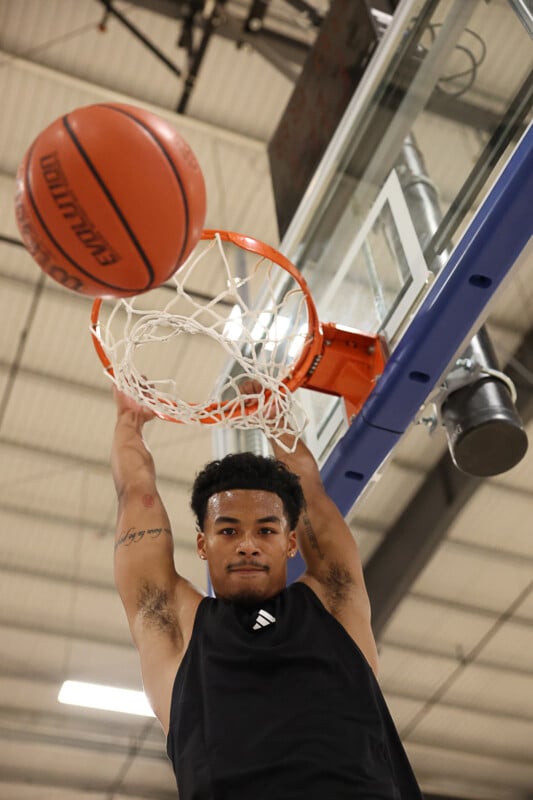
The Sony a1 and a9 III share much in common regarding their autofocus systems. They have 759 focus points covering approximately 92-93% of the overall image area. The a1 and a9 III are rated to -4 and -5 EV, respectively.
The Nikon Z9 has 493 AF points that cover about 90% of the frame and is rated to focus down to -6.5 EV. Nikon has continually improved the Z9’s autofocus system since the camera launched, and while it may not be the best of the bunch, it’s in the mix despite having fewer AF points and less autofocus area coverage than the competition.
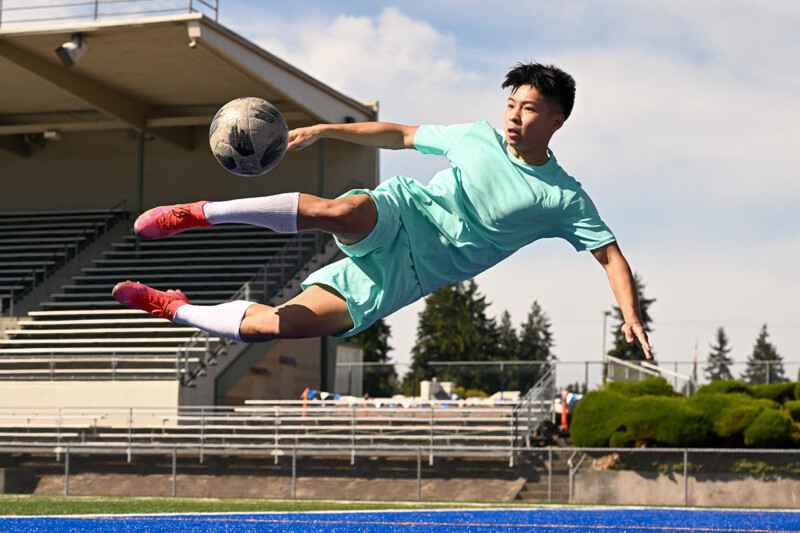
In all cases, the cameras have AI-powered (deep learning) subject detection modes and tracking, and the R1 has special new use cases for specific sports. Determining how well each camera focuses relative to the R1 will require additional testing. Still, it is worth noting that of the three cameras that PetaPixel has comprehensively used, the a1, a9 III, and Z9, the a9 III offers the best overall autofocus performance in terms of speed, accuracy, and ability to handle challenging situations. It will be a tough camera to top, and the early experience with the R1 points toward it not being quite up to the task. But time will tell.
The Canon EOS R1 also has a unique selling point compared to the competition: eye tracking. Photographers can use their eyes to control the autofocus area through the viewfinder. While your mileage may vary, this feature is interesting and can work extremely well. For some photographers, this feature may more than make up for any potential shortcomings elsewhere.
Verdict: From a subjective standpoint, it’s too early to tell, but the Canon EOS R1 is certainly no slouch. From the specifications side of things, the R1 is excellent, and the inclusion of Eye Control AF is a big deal. Early results suggest the R1 is Canon’s best autofocus camera yet. Will it be enough to unseat the a9 III at the head of the table? To be determined.
Body Design and Usability
Of the four cameras under scrutiny, the new Canon EOS R1 is most similar to the Nikon Z9 — they are the only two cameras here with dual-gripped designs. This means they are relatively bigger and heavier than the Sony a1 or a9 III, but more comfortable to use when shooting vertically.
The Canon EOS R1 feels surprisingly light in the hands despite its size, weighing about 1,115 grams (2.5 pounds) with a battery and memory card, but it is a large camera. Its dimensions (width x height x depth) are 157.6 x 149.5 x 87.3 millimeters (6.2 x 5.9 x 3.4 inches).

It’s not significantly different from the Nikon Z9, which is 149 x 150 x 91 millimeters (5.9 x 5.9 x 3.6 inches). However, that camera weighs quite a bit more than the R1, at 1,340 grams (just under three pounds).
The a1 and a9 III don’t have built-in vertical grips, so they’re much shorter and lighter.
As for what’s better or worse regarding camera size and shape, there’s no “right” answer. Some may prefer any of these four cameras more than the rest, although arguably, the a9 III is much better-feeling than the a1. In any event, the Canon EOS R1 felt great in the hands of the three PetaPixel staffers who used it.

Where there is a bit less subjectivity is the electronic viewfinder. This may be the R1’s standout feature, as its large, bright, high-resolution viewfinder is superb. It has a 0.5-inch OLED EVF with approximately 9.44 million dots. It has 100% coverage and a whopping 0.9x magnification. Plus, it has the fancy eye-tracking technology built in. While Canon hasn’t shared specific brightness values, the R1’s EVF felt plenty bright and beautiful in use.
The Sony a9 III and a1 also have an excellent EVF with 0.9x magnification and 9.44 million dots, but the a9 III’s viewfinder experience is relatively smoother thanks to the faster sensor readout speed.

The Z9’s viewfinder has 3.69 million dots and 0.8x magnification. While it is the clear loser in terms of resolution and size, it is a truly blackout-free viewfinder because of Nikon’s unique Dual Stream technology.
All four cameras have good viewfinders, but the R1 makes a strong case for being the best overall. It may seem silly from the outside looking in to worry much about the EVF, but it is genuinely one of the most impactful parts of the overall experience of using a camera. It matters significantly.
Verdict: There’s no doubt that some photographers will prefer the Canon R1’s shape and size, while others may like Nikon’s approach better. Others still don’t want a vertical grip and will think the a9 III is the best of the bunch. Canon has made some changes to its menu systems this time, too, and the jury is still out on those. However, where the R1 stakes its claim as offering the best user experience comes down to its fantastic electronic viewfinder, which makes a case for being the best among a group of excellent EVFs.
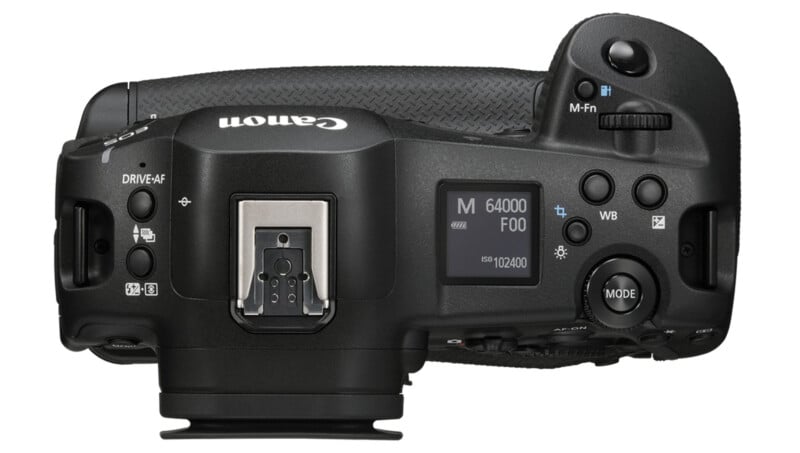
Video
Again, further testing is required, but how do the R1’s video chops stack up on paper? It’s a bit of a mixed bag.
Like the a9 III, the R1 can’t do 8K shooting thanks to its 24-megapixel sensor. It can, however, shoot 4K/60p video without a crop with 6K oversampling. But the a9 III can shoot 4K/120p video, so there’s that. The a9 III’s global shutter sensor also has benefits for video, ensuring that there aren’t odd banding issues with lighting, and of course, no rolling shutter.
The R1 does have 6K/60p video capture, but it’s exclusively available when shooting RAW video, which is a resource hog that promises excellent video quality. As for speedy shooting, the R1 can shoot FHD at up to 172 frames per second.
It is worth mentioning that the R1 has a full-size HDMI port and independent mic and headphone jacks, which is great. Less great is that it’s not possible to record high-res video to both CFexpress card slots — only one high-res file plus a proxy.
Given their high-resolution sensors, the a1 and Z9 can shoot 8K video, the a1 at up to 30p, and the Z9 at up to 60p.
Verdict: The Canon EOS R1 may have some strange omissions regarding video — where are the waveforms? — but it has some nice inclusions as well and is shaping up to be a strong hybrid shooter overall, even if it’s not necessarily the best at any one thing.
Canon EOS R1 Versus the Competition
The Canon EOS R1 is in a difficult position. It is arguably Canon’s most anticipated camera ever, and the company really needed it to arrive with a bang. It doesn’t land with a thud, but it isn’t the home run Canon hoped for.

Ultimately, the Canon EOS R1 is not the best camera on paper. It has not yet proven the best camera in the real world, either, which is unfortunate given the R1’s price. It will release this fall for $6,299, $300 more than the Sony a9 III, $800 more than the Nikon Z9, and $200 less than the Sony a1.
For any photographer not already embedded in the Canon EOS R ecosystem, the R1 is a tough sell. It is a very good camera in a world of great ones, and for Canon right now, that’s not enough. There are a lot of excellent features that are being held back by a sensor that, while good, feels a bit outdated and the camera isn’t even out yet.
Image credits: Canon, Nikon, and Sony. EOS R1 sample photos by Chris Niccolls. Featured image created using an asset licensed via Depositphotos.
